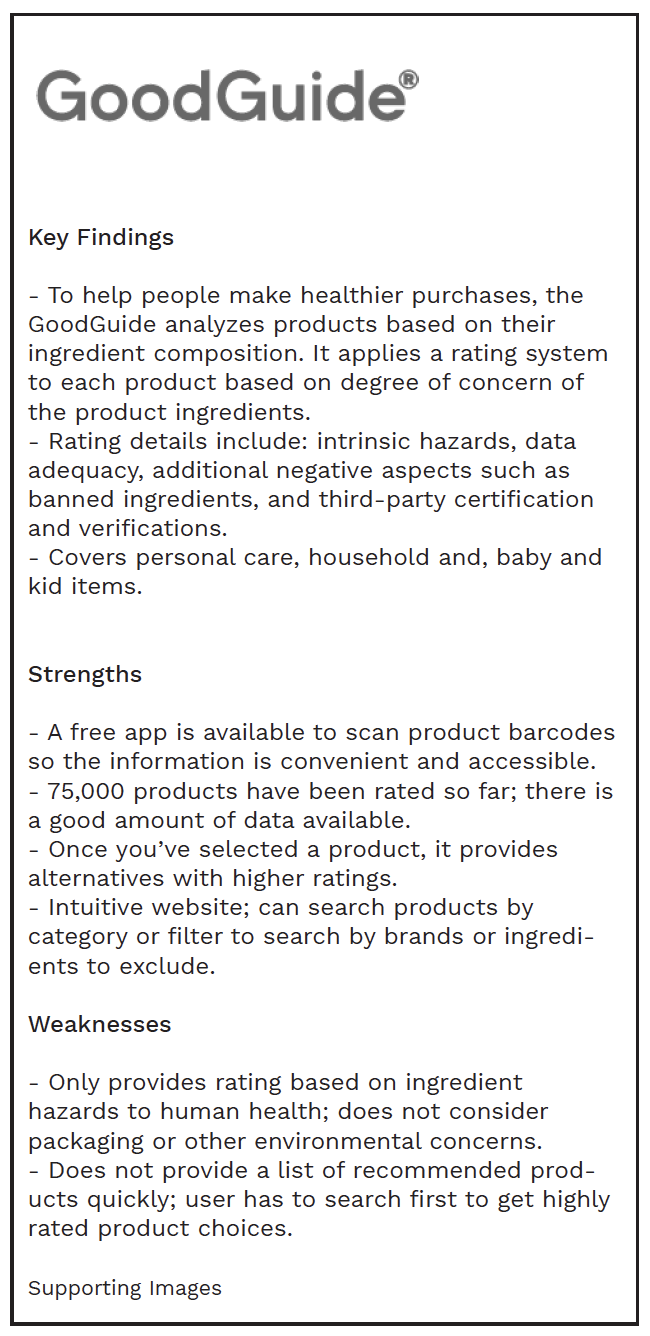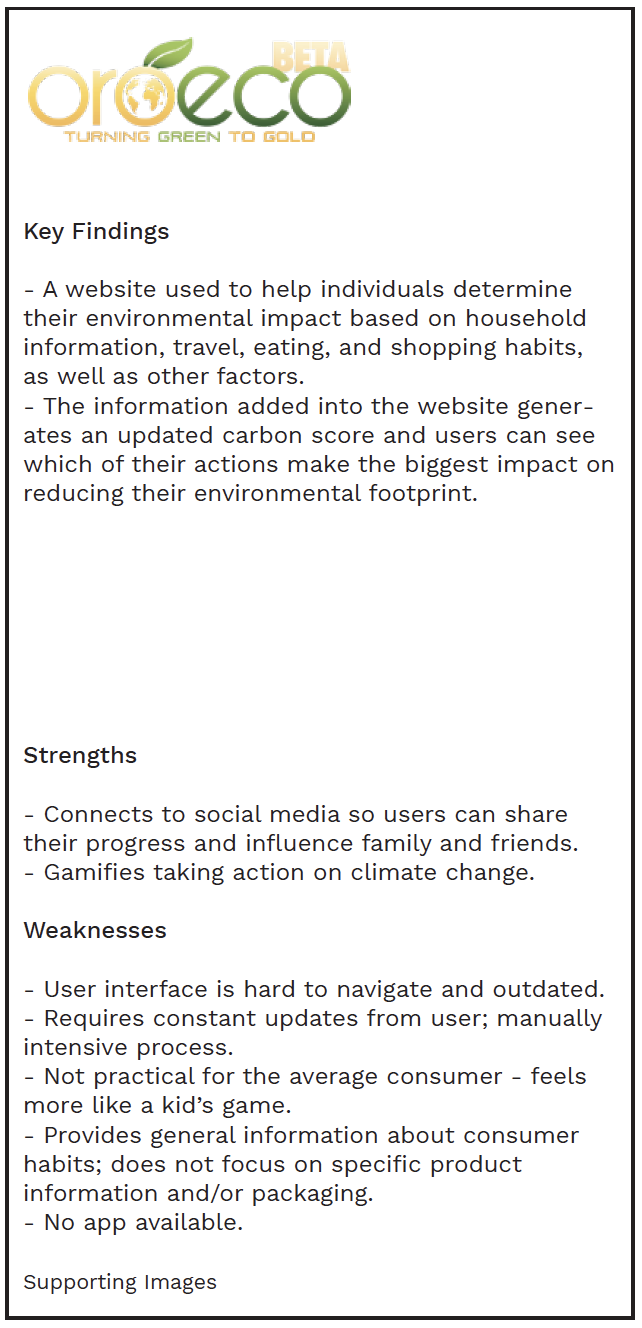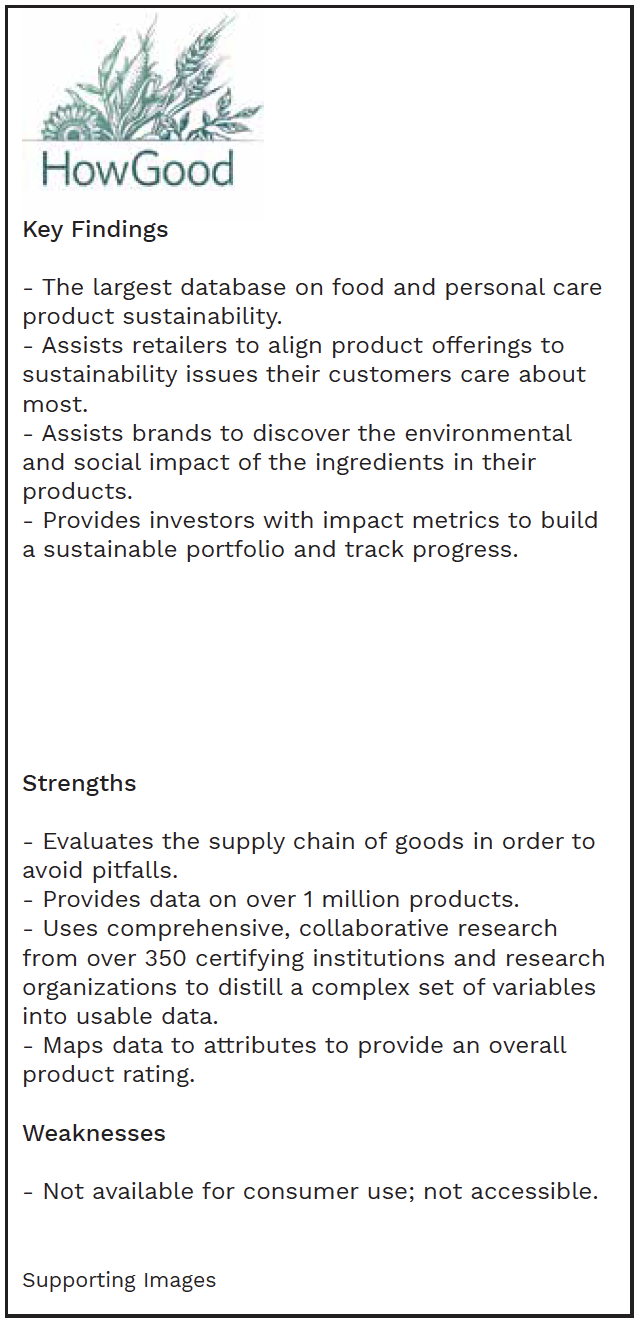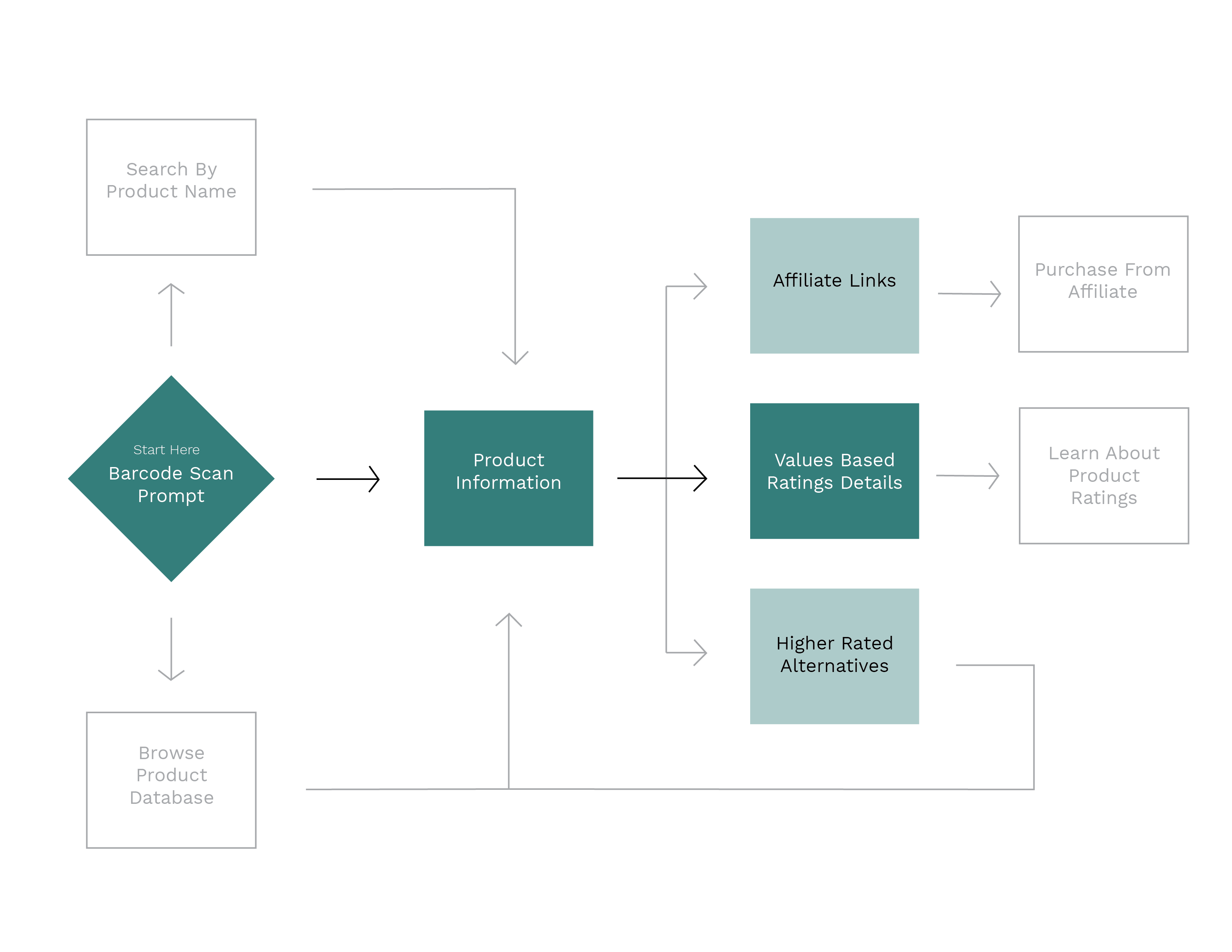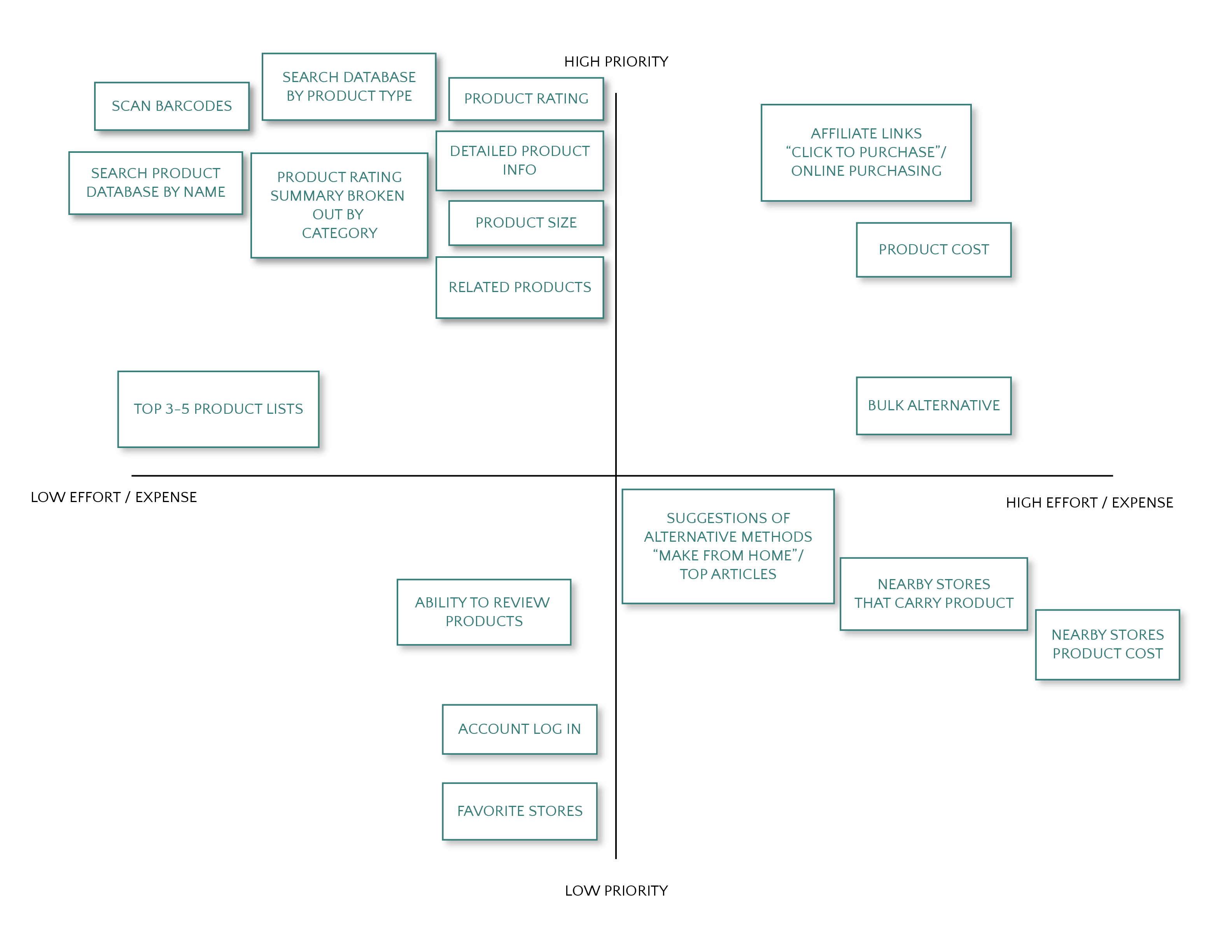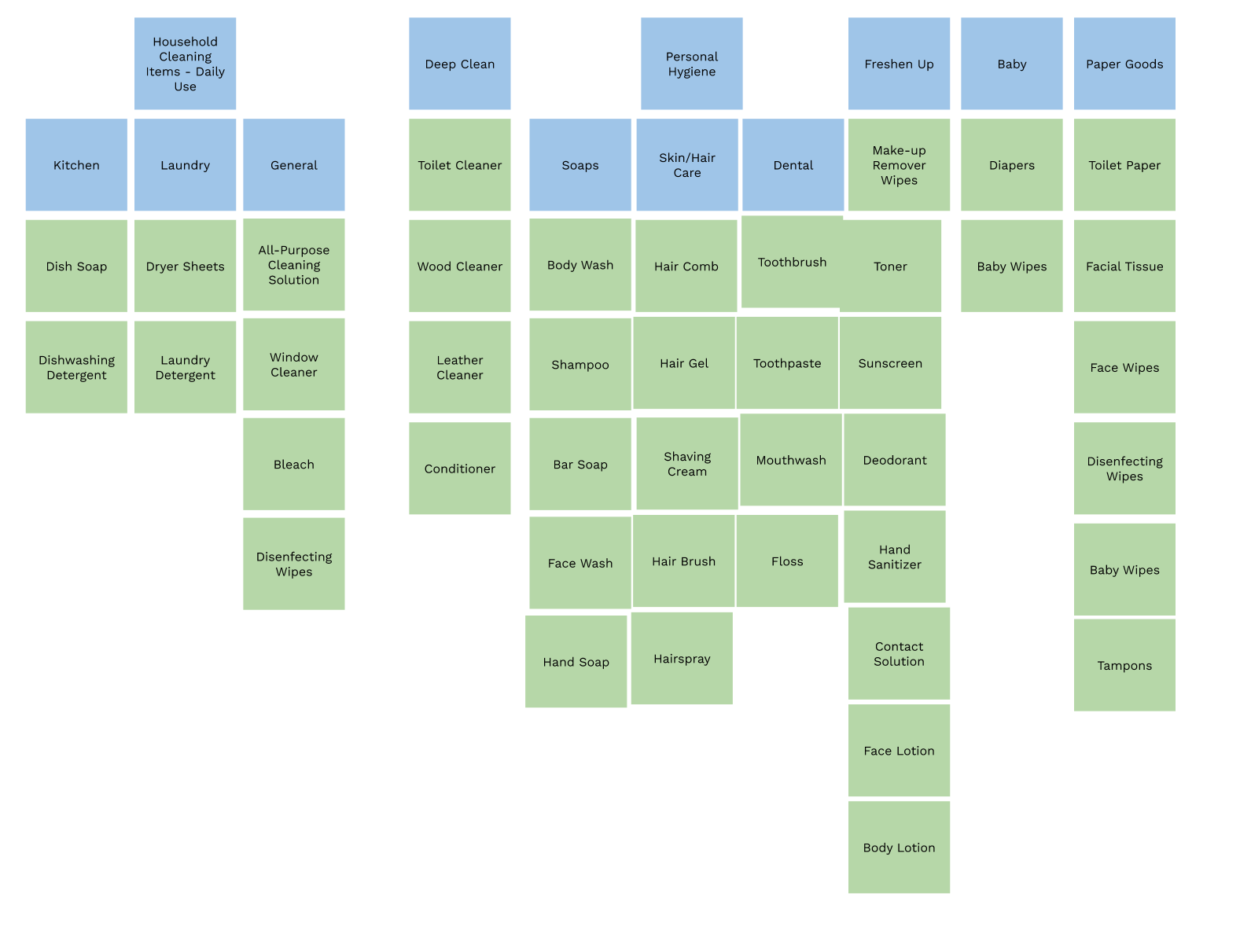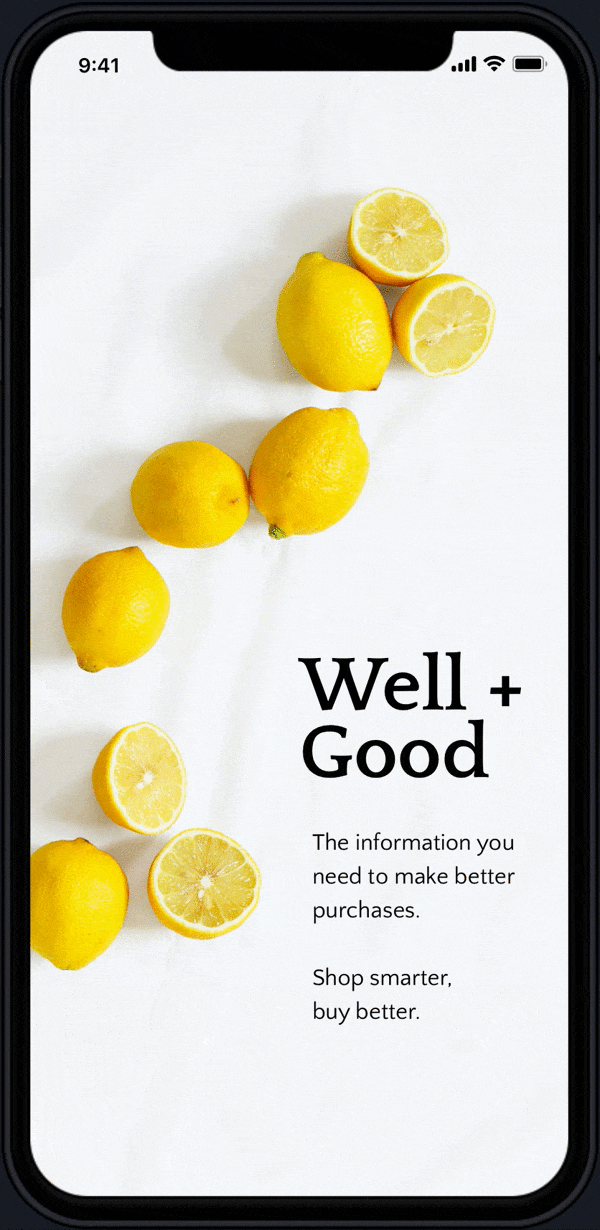The objective seemed simple enough: identify a real-world problem and develop a product to solve for it.
I started with the premise that “consumers would like to limit the amount of single-use plastic in their everyday purchases but find it inconvenient and/or inaccessible.”As it turns out, this is a true statement, however, the users I interviewed want the ability to make better purchasing decisions for their health and the environment more broadly. Fixating on single-use plastic, as I found, was too narrow and needed to be expanded to include a myriad of factors. Thus, Well + Good was born.
Problem Statement
Conscientious consumers need a way to have more information about the products they purchase so they can make decisions that lead to better health outcomes and lessen environmental degradation.
”I think people want to do the right thing, it's overwhelming. You feel like you can't make a difference so you just don't try.
User Interviews: Key Findings
| Interview Notes | Takeaways | |
|---|---|---|
No one respondent focused just on plastic packaging as their main challenge with making eco-conscious choices. |
Product solution needs to address sustainability issues more broadly. |
|
Areas of effort by the consumer to be more eco-conscious include: reducing packaging by buying in bulk, buying local from farmer’s markets, doing individual research to find the most sustainably sourced option. |
Product solution needs to identify and classify different value systems into the decision making process. |
|
Green labeling is not necessarily trusted but widely used to navigate decisions. |
Data source must not be influenced by individual companies and their marketing. |
|
Convenience is a top priority. |
Product must be accessible to everyone, easy-to-use anywhere, and quick to provide reliable information. |
|
Price is not as important, within reason, if there is evidence the product and company are making healthy, sustainable products. |
Reliable product rating information more valuable than price. |
